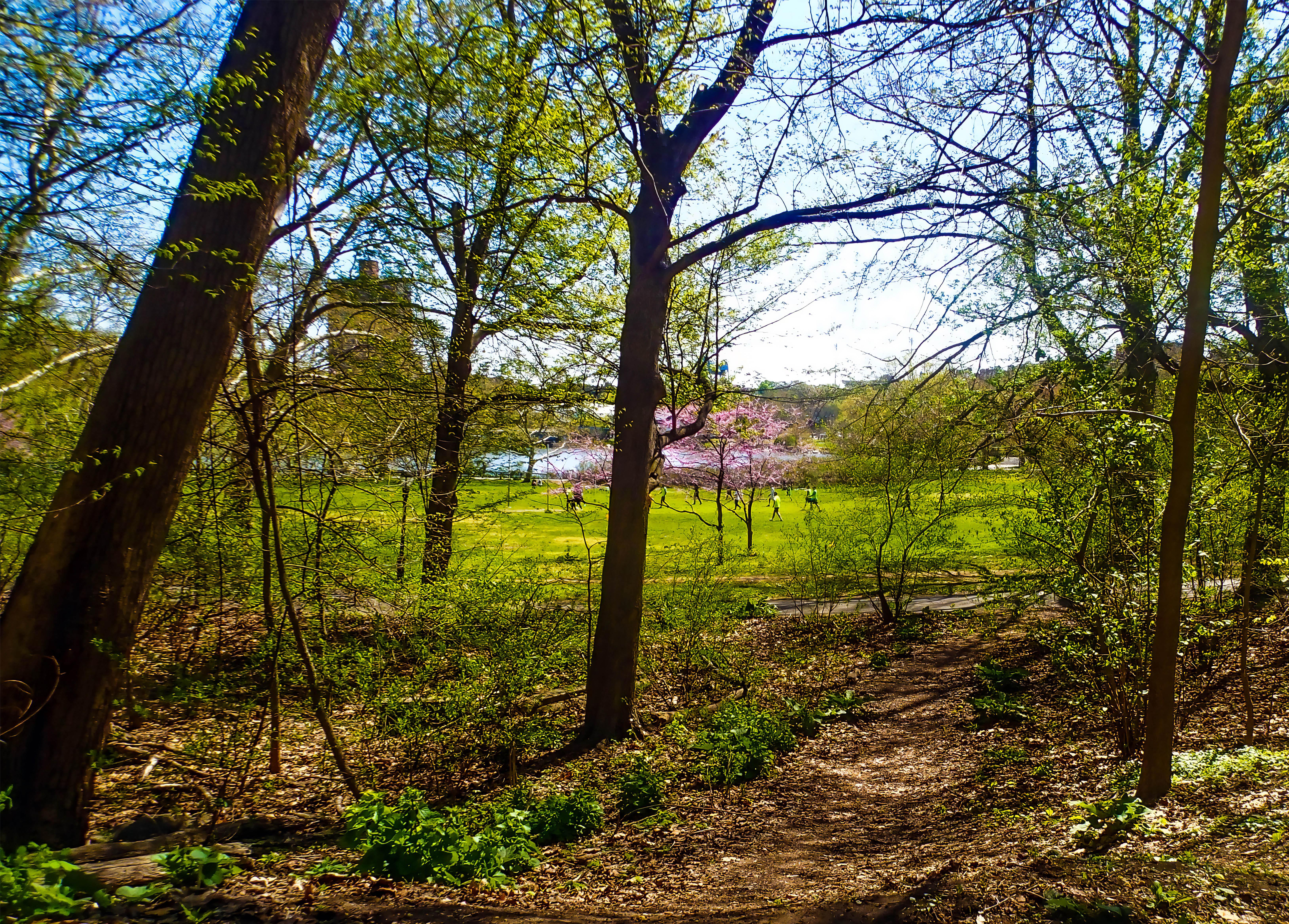Concrete canopies: Mapping urban forest patches
NEW HAMPSHIRE—If prompted to imagine a forest, one might first picture a vast wooded landscape located far away from cities and towns. In the context of an urban area, the mind might next envision planned and manicured parks, such as New York City’s Central Park. However, researchers in the Forest Service Northern Research Station are focusing upon an oft-overlooked natural resource: urban forest patches.
“Urban areas have lots of trees lining streets, dotting yards and covering grassy parkland; however, we also have a lot of natural forests within our cities,” says Nancy Sonti, a research ecologist with the Forest Service Northern Research Station. “These urban forest patches range in size from hundreds of acres to less than an acre. What they all have in common is that they are allowing for natural processes of decomposition and regeneration, just like more traditionally conceived rural forests.”
These urban forests provide many crucial and well-documented services. They cool the surrounding air temperature, which alleviates urban heat island effects, absorb city storm water runoff, provide habitat to animals and plant life, and contribute to local residents’ well-being by offering green space and respite from overdeveloped urban sprawl.
At the Baltimore Field Station, Sonti and fellow researchers are working with partners to conduct multidisciplinary research to better understand and manage these urban forests. Recent research has ranged from investigating spatial characteristics, plant community composition and soil health to studies that explore and quantify societal benefits of these forests.
“Our research findings have included key insights. For instance, despite facing challenges from invasive species and stressors, the majority of urban forest patches exhibit native canopies with high rates of tree growth and healthy soils,” observes Sonti.
While researchers strive to better understand the workings and benefits of these urban forest patches, they are also working to better quantify and map the urban forest patches that dot urban landscapes. One such tool is the Forest Service’s Urban Forest Patch Viewer. A key feature of the viewer is its user-friendly interface, which allows someone to explore forest patches within New York City, Philadelphia, Baltimore and Washington, D.C. The forest patch layer displayed in the viewer filters out hard surfaces such as streets and buildings and distinguishes patches of forest canopy from managed landscaped areas such as lawns or street trees.
“We are excited to have this tool available,” says Sonti. “With map layers that depict patch sizes, ownership categories, and forest edges, the viewer tool provides insights that can be harnessed by policymakers, urban planners, and conservationists.”
Researchers hope that making urban forest patch data more readily available will have a democratizing effect—allowing more people to appreciate and advocate for the importance of these forests. Already, the data included in the Urban Forest Patch Viewer has affected policy changes in cities like Washington, D.C., and Baltimore, where historic redlining and development pressures threaten access to green spaces.
“It is difficult to manage and protect urban forest patches if we do not know their extent,” explains Sonti. “With the viewer tool, stakeholders and researchers alike can prioritize areas with high conservation value, ensuring that nature can thrive amidst our urban landscapes.”
Note: Learn more by watching the Northern Research Station webinar series, “There’s An App(lication) For That,” in which Nancy Falxa Sonti and colleagues discussed the urban forest patch viewer.

